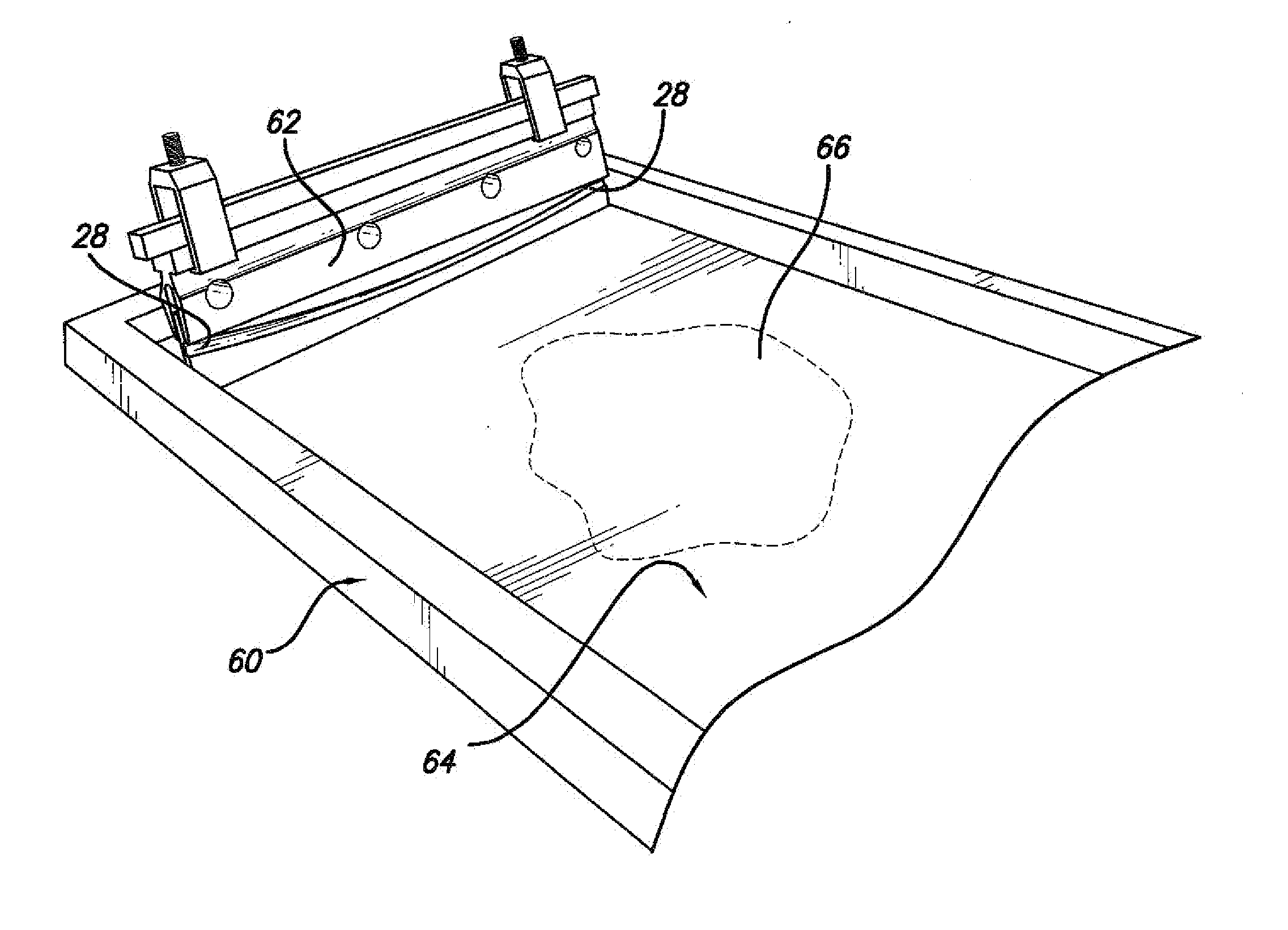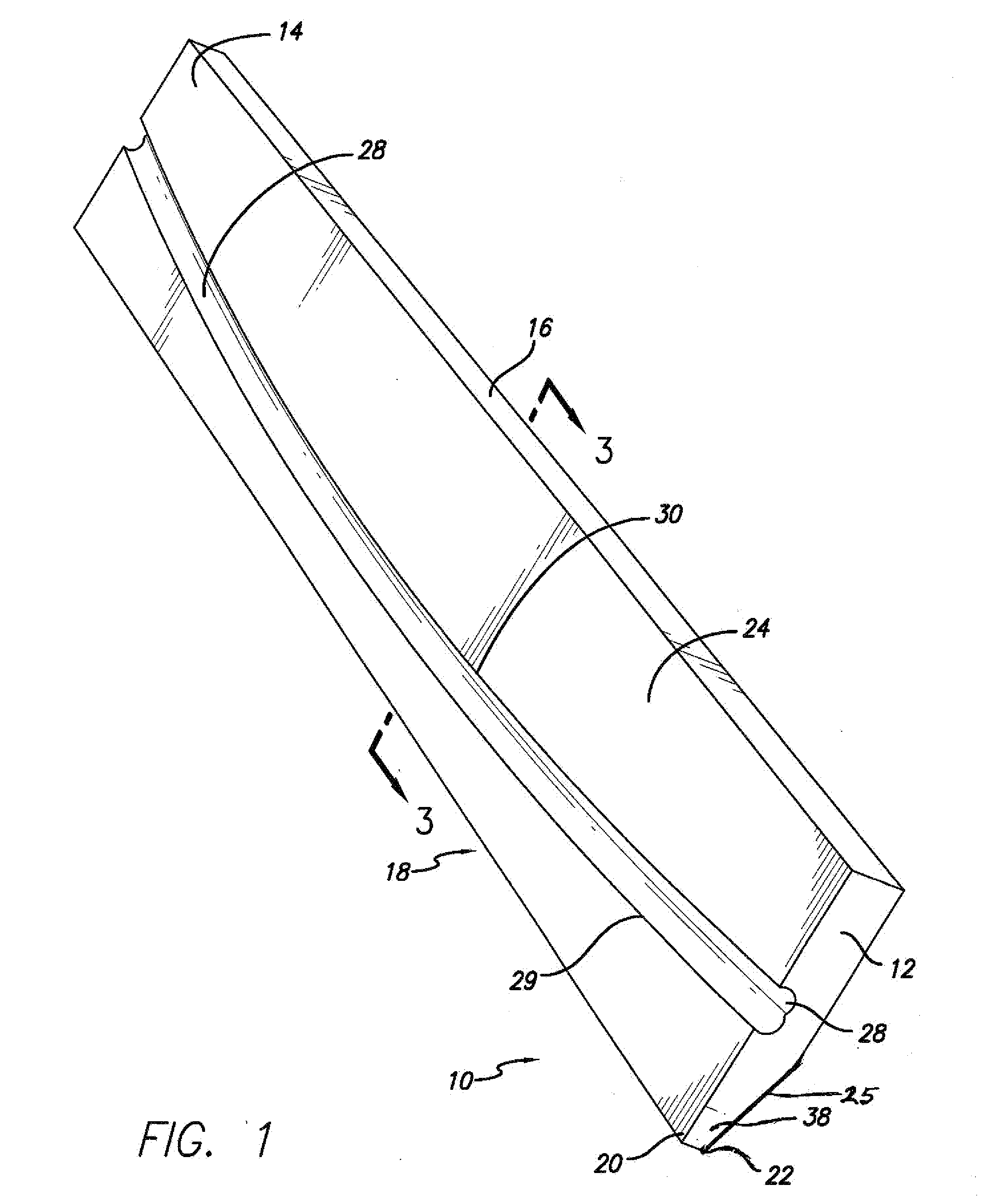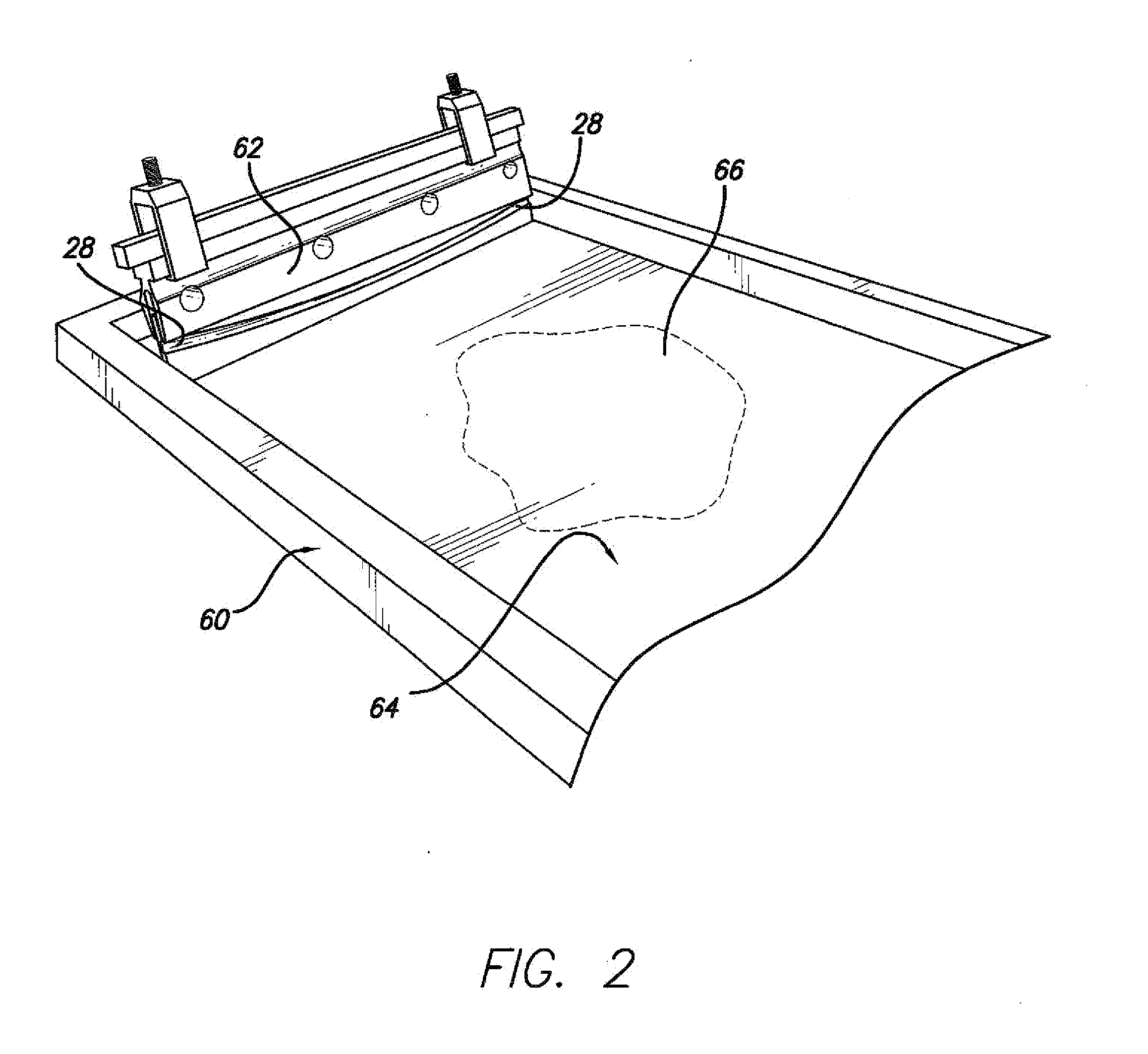Squeegee Blade For Screen Printing And Methods Of Manufacture And Use Of Same
a technology of screen printing and squeegee blades, which is applied in the field of improved squeegee blades, can solve the problems of reducing print quality, excessive interface area between ink piles, dot gain, or mottling, and achieves high-speed print runs without excessive screen ripping, and reduces downward pressur
- Summary
- Abstract
- Description
- Claims
- Application Information
AI Technical Summary
Benefits of technology
Problems solved by technology
Method used
Image
Examples
Embodiment Construction
[0025]As illustrated in FIGS. 1-6, a first embodiment of an improved squeegee blade 10 of the invention is provided, which includes, a first end 12, a second end 14, a top surface 16 for receipt by a blade holder 62, a bottom surface 18, a front face 24, and a back surface 26, a first printing edge 20 joining the front face 24 and bottom surface 18, a second print edge 22 joining the bottom surface 18 and back surface 26, bull nose corner portions at the ends of the bottom surface 18, and a buckle control channel 28 formed in the front face 24. Both printing edges 20 and 22 are adapted for contacting the screen 64 of a screen printing press 60 (see FIG. 2). The squeegee blade 10 is generally an elongated rectangular in shape with the exception of the beveled surface 25 printing edge 22, bull nose corner portions 38, and the buckle control channel 28.
[0026]Turning to the details of the squeegee blade 10, blades of this design have proven to significantly increase the efficiency of th...
PUM
 Login to View More
Login to View More Abstract
Description
Claims
Application Information
 Login to View More
Login to View More - R&D
- Intellectual Property
- Life Sciences
- Materials
- Tech Scout
- Unparalleled Data Quality
- Higher Quality Content
- 60% Fewer Hallucinations
Browse by: Latest US Patents, China's latest patents, Technical Efficacy Thesaurus, Application Domain, Technology Topic, Popular Technical Reports.
© 2025 PatSnap. All rights reserved.Legal|Privacy policy|Modern Slavery Act Transparency Statement|Sitemap|About US| Contact US: help@patsnap.com



